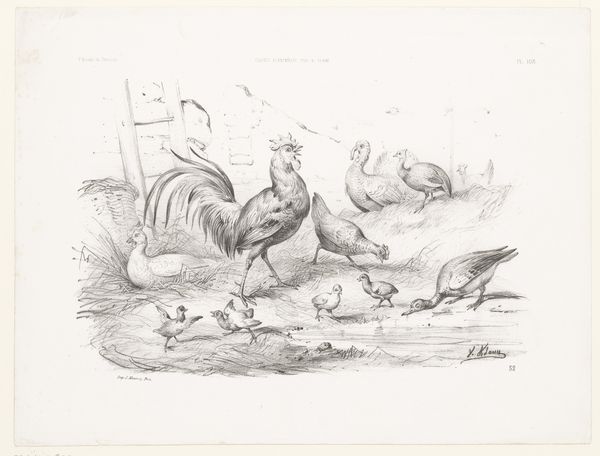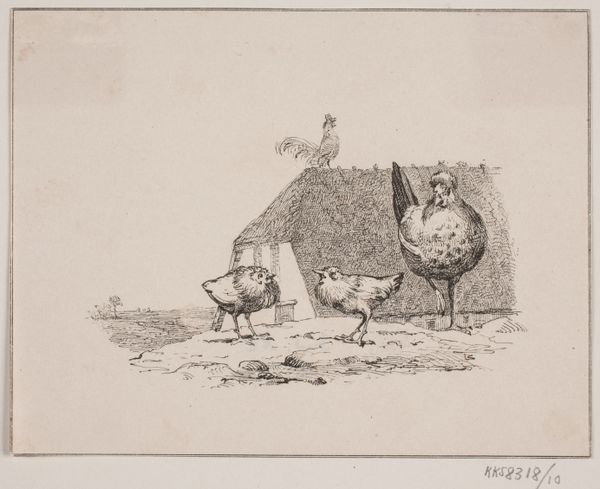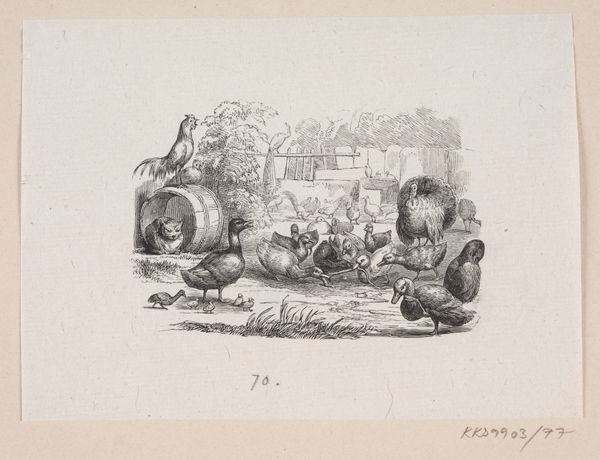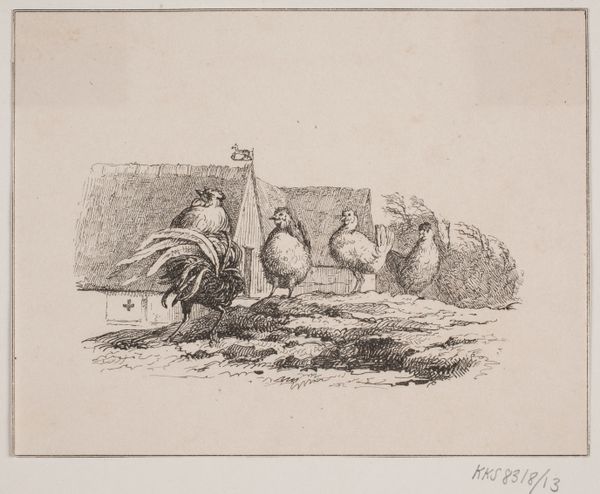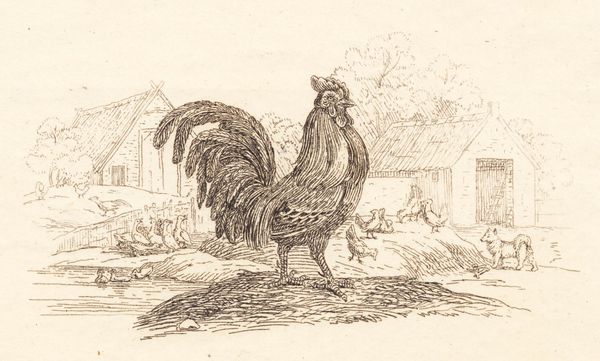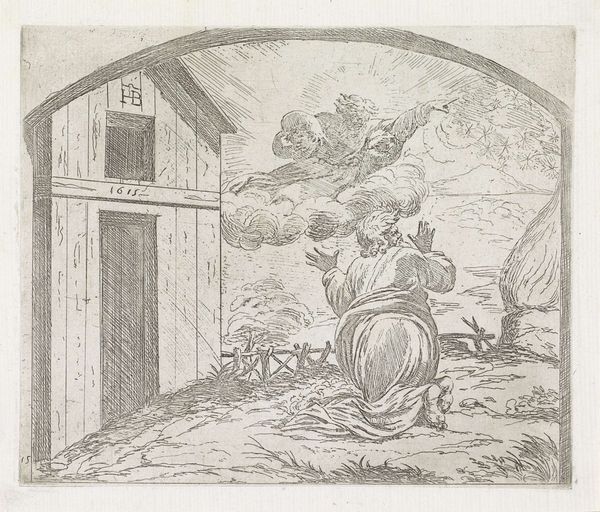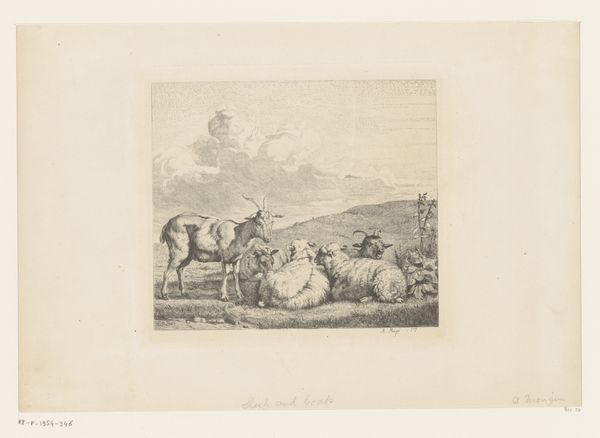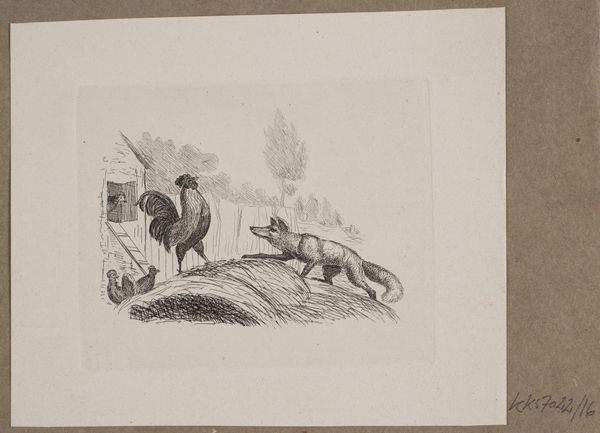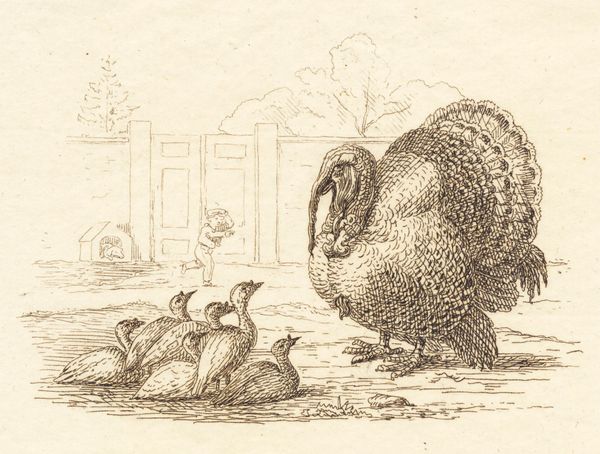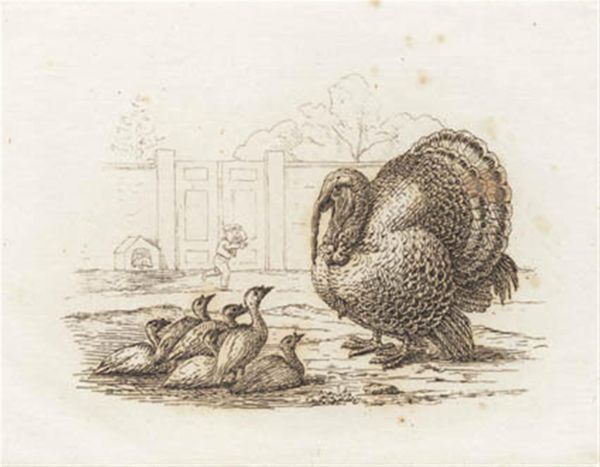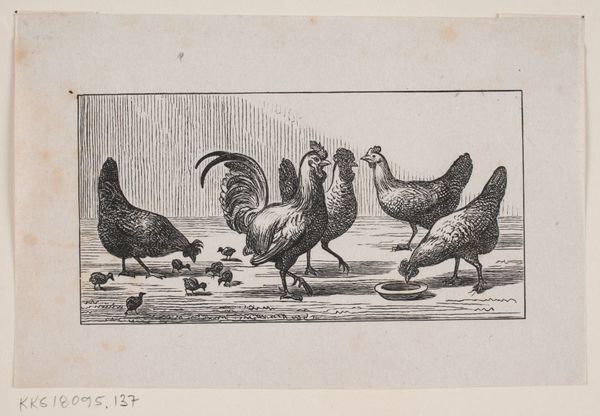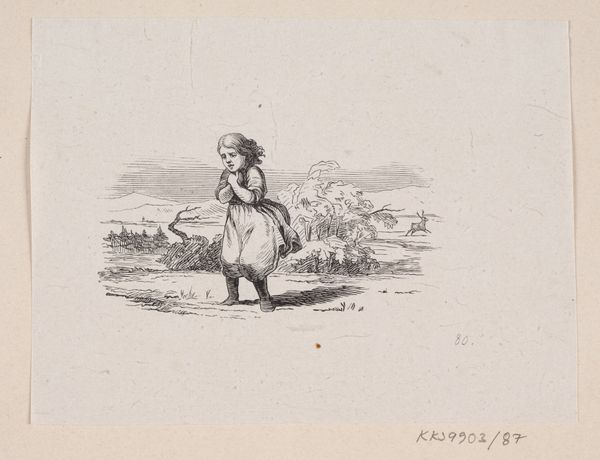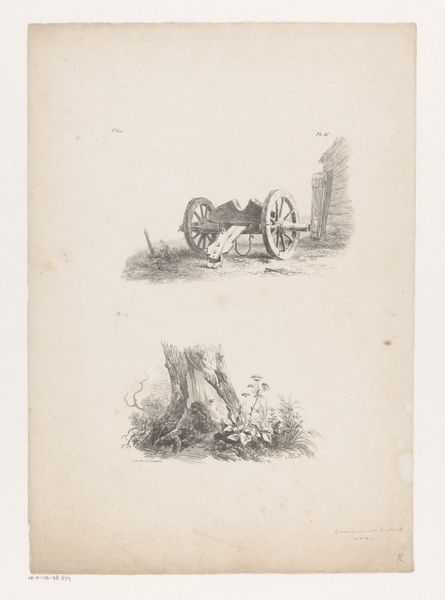
#
imaginative character sketch
#
light pencil work
#
quirky sketch
#
personal sketchbook
#
idea generation sketch
#
sketchwork
#
ink drawing experimentation
#
sketchbook drawing
#
watercolour illustration
#
fantasy sketch
Dimensions: height 215 mm, width 275 mm
Copyright: Rijks Museum: Open Domain
Editor: Here we have Pieter de Goeje’s, "Haan, kip en kuikens," placing it somewhere between 1809 and 1859. It appears to be a watercolour and ink drawing. It's just so delicate and sweet, like a snapshot of domestic life. What do you make of it? Curator: This piece, while seemingly simple, speaks volumes about the relationship between art and emerging middle-class values during the period. Think about it – why depict something so seemingly ordinary? Before industrialization really took hold, the agricultural life was central to social and economic structures. Do you think this idealization of farm life might have had a political dimension? Editor: Political? It's just chickens! I hadn’t thought about it like that. Curator: Exactly. It wasn’t JUST chickens. The imagery associated with agrarian life can often mask complex social power dynamics. The burgeoning middle class wanted to legitimize their lifestyle. The idyllic representation of livestock and family was in opposition to what? What values do you think it tried to uphold? Editor: Oh, okay, I get it. So maybe it was in contrast to the grime and uncertainty of urban industrialisation or some show of patriotism toward Dutch heritage? And portraying that imagery in artworks might be the artist’s support for these values? Curator: Precisely. This sort of art normalises those associations. This ordinary scene would communicate those values through common appreciation. How does knowing that change your initial response? Editor: It definitely makes me think twice about taking the image at face value! So, there's probably more at stake in a picture of chickens than I initially realized! Curator: Always! Now consider who gets to decide which stories art tells, and how. Editor: Definitely food for thought, I’ll look at art and imagery through a more critical, contextual lens now, thank you!
Comments
No comments
Be the first to comment and join the conversation on the ultimate creative platform.
